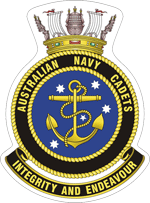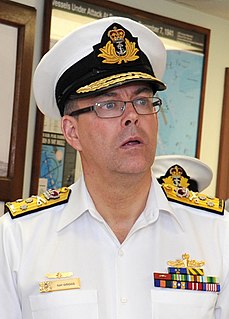The Commendation Medal is a mid-level United States military decoration which is presented for sustained acts of heroism or meritorious service. For valorous actions in direct contact with an enemy, but of a lesser degree than required for the award of the Bronze Star Medal, a Commendation Medal with "V" Device or Combat "V" is awarded; the "V" device may be authorized for wear on the service and suspension ribbon of the medal to denote valor. On January 7 2016, The "C" Device or Combat "C” was created and may be authorized for wear on the service and suspension ribbon of the Commendation Medal to distinguish an award for meritorious service or achievement under the most arduous combat conditions. A Commendation Medal with Combat Device is unofficially named the “Combat Commendation” and is often considered to be a higher level form of the Commendation Medal, regardless of the Awarding Branch. Retroactive award of the “C” device is not approved for medals awarded before 7 January 2016. Each branch of the United States Armed Forces issues its own version of the Commendation Medal, with a fifth version existing for acts of joint military service performed under the Department of Defense.
This is a table of the ranks and insignia of the Canadian Armed Forces. As the Canadian Armed Forces is officially bilingual, the French language ranks are presented following the English.

The Chief of the Defence Staff is the second most senior member of the Canadian Armed Forces and heads the Armed Forces Council, having primary responsibility for command, control, and administration of the forces, as well as military strategy, plans, and requirements. The position is held by a senior member of one of the three main branches of the Canadian Armed Forces. The current CDS, since 17 July 2015, is Jonathan Vance.
A member of the armed forces mentioned in dispatches is one whose name appears in an official report written by a superior officer and sent to the high command, in which his or her gallant or meritorious action in the face of the enemy is described.

The Meritorious Service Medal (MSM) is a military award presented to members of the United States Armed Forces who distinguished themselves by outstanding meritorious achievement or service to the United States subsequent to January 16, 1969.

An aiguillette, also spelled aguillette, aiglet or aglet, is a cord with metal tips or lace tags, or the decorative tip itself.

The awards and decorations of the Civil Air Patrol are "designed to recognize heroism, service, and program achievements" of members of the Civil Air Patrol (CAP) of the United States of America. The CAP is the official auxiliary of the United States Air Force, and these awards are made to improve the esprit de corps of members. These awards are all worn in the form of medals or ribbons and all are considered civilian decorations. Civil Air Patrol regulations allow them to only be worn and displayed on appropriate CAP uniforms. In order to be considered for one of these awards, an individual must be a member in good standing of the Civil Air Patrol at the time of the act being recognized. There is a statute of limitations for these awards and all recommendations must be submitted within 2 years of the act being performed. It is possible for the next of kin of deceased persons to be presented awards to which a member was entitled, but which he or she did not receive. Award review boards are established at the region, wing, group, and squadron levels to consider recommendations for all awards and decorations.

The Australian Defence Force Academy (ADFA) is a tri-service military Academy that provides military and tertiary academic education for junior officers of the Australian Defence Force in the Royal Australian Navy (RAN), Australian Army and Royal Australian Air Force (RAAF). In 2016 the Academy began accepting civilian students in its undergraduate courses.

The Australian Cadet Forces Service Medal is awarded to recognise long and efficient service by officers and instructors in the Australian Defence Force Cadets. It is awarded for 15 years service. Additional clasps are issued for every 5 years additional service.
Major General Anthony Peter "Tony" Fraser is an Australian public servant and retired Australian Army officer. He is currently the Deputy Secretary Capability Acquisition and Sustainment Group within the Department of Defence, and has held the position since November 2018. He was previously the Managing Director of Airbus Australia Pacific. </ref> He retired from the army in 2011 after a 34-year career, his final posting being Head, Helicopter Systems Division within the Defence Materiel Organisation.
Vice Admiral Matthew John Tripovich is a retired senior officer of the Royal Australian Navy. He served as Chief Capability Development Group from 2007 until his retirement in October 2010.
The Australian Defence Organisation (ADO) is composed of the armed forces of the Commonwealth of Australia, the Australian Defence Force (ADF), and the Australian Public Service government department, the Department of Defence which is composed of a range of civilian support organisations.

Rear Admiral Nigel Stephen Coates, was a senior officer in the Royal Australian Navy.
The Australian Defence Organisation (ADO) is composed of the armed forces of the Commonwealth of Australia, the Australian Defence Force (ADF), and the Australian Public Service government department, the Department of Defence which is composed of a range of civilian support organisations.
Air Marshal Leslie Bruce "Les" Fisher AO is a retired senior officer of the Royal Australian Air Force (RAAF), serving as its Chief from November 1994 until May 1998.

The Australian Navy Cadets (ANC) is a voluntary youth organisation owned and sponsored by the Royal Australian Navy. Together with the Australian Air Force Cadets and Australian Army Cadets, it forms the Australian Defence Force Cadets. It hosts over 91 units.

Vice Admiral Raymond James Griggs, is a former senior officer in the Royal Australian Navy. He served as Chief of Navy from June 2011 to June 2014, before being appointed Vice Chief of the Defence Force until his retirement in July 2018.

Rear Admiral Stuart Campbell Mayer, is a senior officer in the Royal Australian Navy. He served as the Commander Australian Fleet from 12 June 2014 to 19 January 2018.
Vice Admiral Robert Andrew Kevin Walls, AO is a retired senior officer of the Royal Australian Navy (RAN). In 42 years of service, Walls commanded HMA Ships Tobruk, Moreton and Brisbane, served as Deputy Chief of Naval Staff and Maritime Commander Australia, before his career culminated with his appointment as Vice Chief of the Defence Force from April 1995 until his retirement in March 1997.











